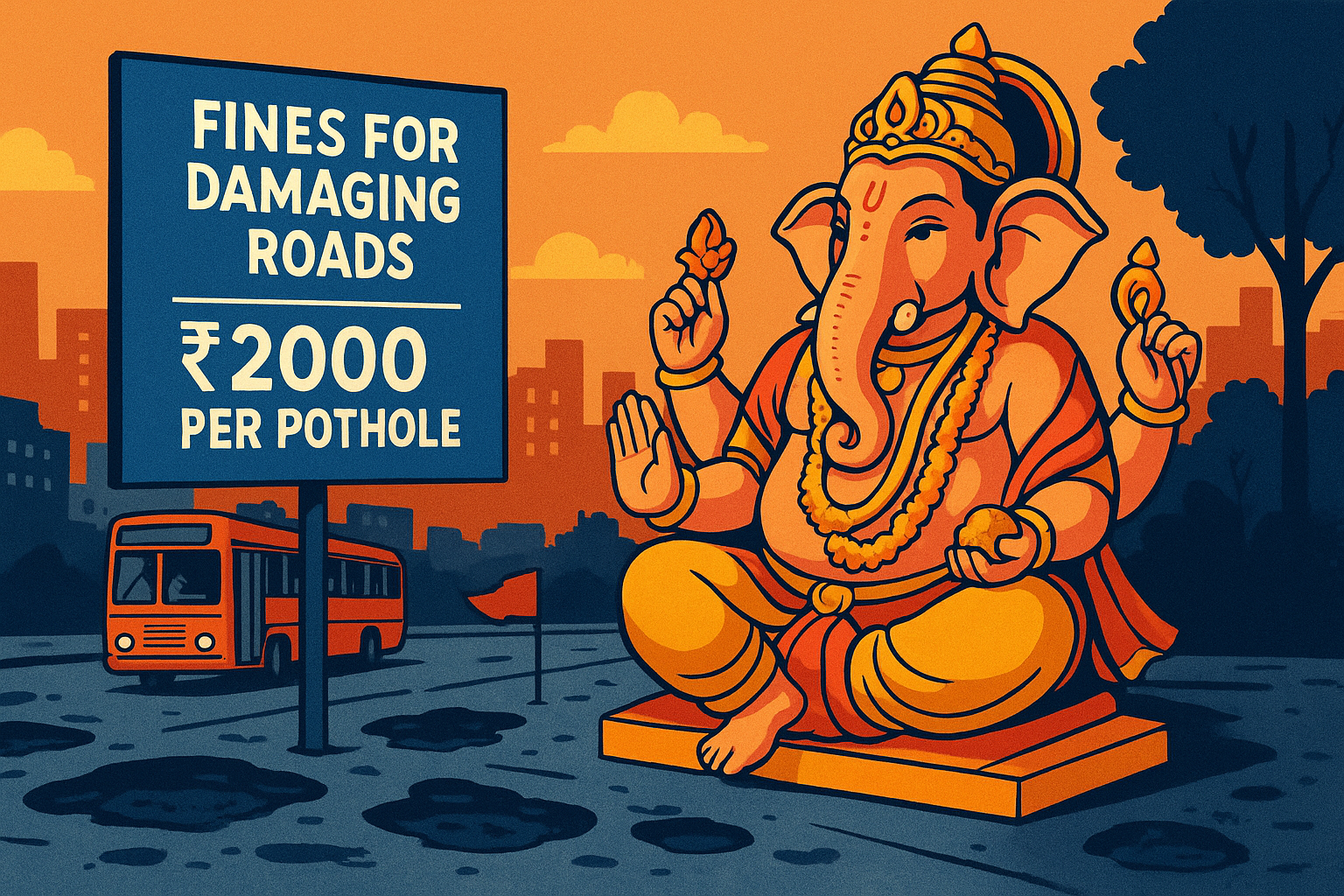
Ganeshotsav 2025: Tradition, Roads, and the Price of Celebration in Mumbai
In Mumbai, the countdown to Ganeshotsav is always more than just a calendar date — it’s a cultural drumbeat that begins weeks in advance. Streets are swept, artisans work day and night on idols, and neighbourhoods transform into stages of devotion, colour, and music. Yet, in 2025, as the city prepares for the ten-day festival starting August 27, an unusual conversation is playing out — not about the grandeur of the idols or the scale of the festivities, but about potholes, penalties, and policy.
At the heart of it is a tug-of-war between tradition and urban governance. The Brihanmumbai Sarvajanik Ganeshotsav Samanvay Samiti (the umbrella body for Ganpati mandals) has appealed to Chief Minister Devendra Fadnavis to waive the fines imposed by the Brihanmumbai Municipal Corporation (BMC) for digging into newly concretised roads. For many mandals, erecting their pandals requires small holes in the ground to secure bamboo poles — an age-old method in a city where space is precious.
The Fine Debate
Earlier this year, the BMC rolled out a stiff penalty of ₹15,000 per pothole — the first time such a high fine was levied — to discourage road damage. But after pushback from the samiti, the fine was reduced to ₹2,000 per hole. Even so, the samiti argues that the cost is prohibitive, especially for smaller mandals that run on donations and volunteer effort.
Naresh Dahibhawkar, president of the samiti, points out that nearly 60% of mandals don’t dig roads at all because their pandals are modest. And those that do, he adds, fill the holes immediately after the festival, restoring the road to its original state. “We are not reckless,” he insists. “For years, we’ve taken responsibility to repair what we disturb.”
In 2024, more than 2,200 of Mumbai’s 12,000 sarvajanik mandals received official permissions for pandals. Many, Dahibhawkar says, simply cannot afford even the reduced fine, and that’s where the plea for a full waiver comes in.
Politics and Potholes
Ganeshotsav is as much about community identity as it is about religious devotion, and politicians know it. This week, Shiv Sena (UBT) chief Uddhav Thackeray added his voice — and a pointed warning — to the debate. His stance: no Ganpati mandal should pay a single rupee in penalties until the state government repairs every pothole on the Mumbai-Goa highway. It’s a tactical reminder that governance is a two-way street — quite literally.
Thackeray’s argument also reframes the conversation: why penalise cultural groups for temporary and repairable road use, when the state itself struggles to maintain some of its most critical highways?
Fire Engines and Festival Costs
The road fine isn’t the only financial concern. The samiti has also asked for the waiver of ₹1.25 lakh per day — the charge for fire engines stationed near Lalbaugcha Raja, Mumbai’s most famous Ganesh idol. This towering figure draws lakhs of devotees daily during the festival, and the Mumbai Fire Brigade deploys an engine 24/7 as a safety measure. The samiti argues that while safety is paramount, such costs are too steep for organisers, especially when they are already investing in crowd management, security, and infrastructure.
The Larger Question
This dispute is about more than potholes and fire engines. It’s a test case in how cities negotiate the balance between cultural heritage and urban discipline. Mumbai’s Ganeshotsav is not just a festival — it’s an economic engine for artisans, decorators, food vendors, and countless small businesses. But in a city with strained infrastructure, every festival also adds stress to roads, traffic systems, and public services.
The BMC’s initial ₹15,000 fine was a reflection of an urban planner’s mindset: protect new infrastructure at all costs. The samiti’s resistance is the voice of tradition: festivals are a living part of the city’s fabric, not an inconvenience to be priced out. Somewhere in between lies the pragmatic solution — enforce repair responsibilities, ensure safety, and preserve the cultural spirit without letting public assets suffer.
As CM Devendra Fadnavis and Deputy CM Ajit Pawar weigh the requests, the stakes are both symbolic and practical. Waiving the fines entirely would be a gesture to Mumbai’s deep-rooted Ganesh devotion. Upholding them could signal a new era of civic discipline. Either way, the decision will ripple far beyond the 10 days of the festival — into how Mumbai imagines the coexistence of its traditions with its future.



